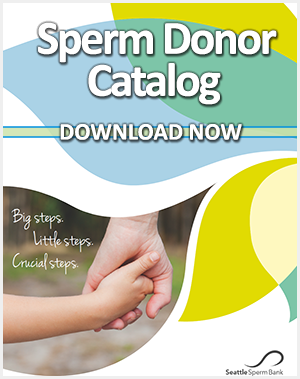When you’re trying to get pregnant using donor sperm, timing is everything. You need to time the shipping and arrival of your sperm samples. You need to time your insemination attempt. And most of all, you need to know the time frame when you’re most likely to conceive—meaning your all-important fertility window. It’s a lot to remember. Fortunately, there’s technology to help you with that in the form of apps that track the signs and symptoms of fertility.
But which one to choose? App prices vary widely from simple $2 period trackers to complex services that can run hundreds of dollars per month. With so many choices, it’s worth spending some time comparing the different types
How Fertility Apps Work
Not all apps are alike. Some measure basal body temperature while others are based on you checking your saliva and cervical mucus during the month. Still others include charting your overall health by tracking sleeping patterns, exercise, diet, and other factors. And of course, some apps merge all this data into a comprehensive whole. Some even allow you to track your fertility status as a couple.
Now, no app is perfect, so you can’t rely on it to do everything. But a good fertility app can help significantly by acting as a tool to help you keep track of the telltale signs. Some even give you a “fertility score” and tell you the best times to attempt conception.
For Best Results, Keep Accurate Data
Since the primary purpose of these apps is to pinpoint your fertility window so you can get pregnant, they are only as accurate as the information you provide. So, for best results, you must input your information regularly. Think of a fertility app as a conscientious nurse. It can remind you to do things to improve your chances of conception, but can’t do them for you.
And since ovulation cycles vary, you can’t rely completely on the calendar (or app). That’s why recording your information can be so valuable. It’s also why the more comprehensive tools cover more than just the timing of your menstrual cycle.
Some apps also collect helpful details that are more subjective. This includes moodiness around your period, sore breasts, weight gain or loss, sleep patterns, sexual activity, alcohol consumption, and other information useful for gaining a more accurate overall picture. Again, this is only helpful if you’re diligent about updating your information in the app.
Along with helping you time your insemination attempts, these apps can teach you a lot about your own body. You may be surprised how much you can learn when you make the effort to chart and analyze your own cycles and habits, especially when it’s laid out in colorful charts on your smartphone or tablet.
If this technology sounds like something you could use, start by doing your research. Go online and read reviews of some of the best-selling fertility apps such as Clue, Groove, Glow, Kindara, and Ovia Fertility. Or ask your friends, doctor, or midwife about their experiences. The more homework you do now, the better prepared you’ll be. Because when you’re trying to conceive using donor sperm, tools like these could make all the difference.


